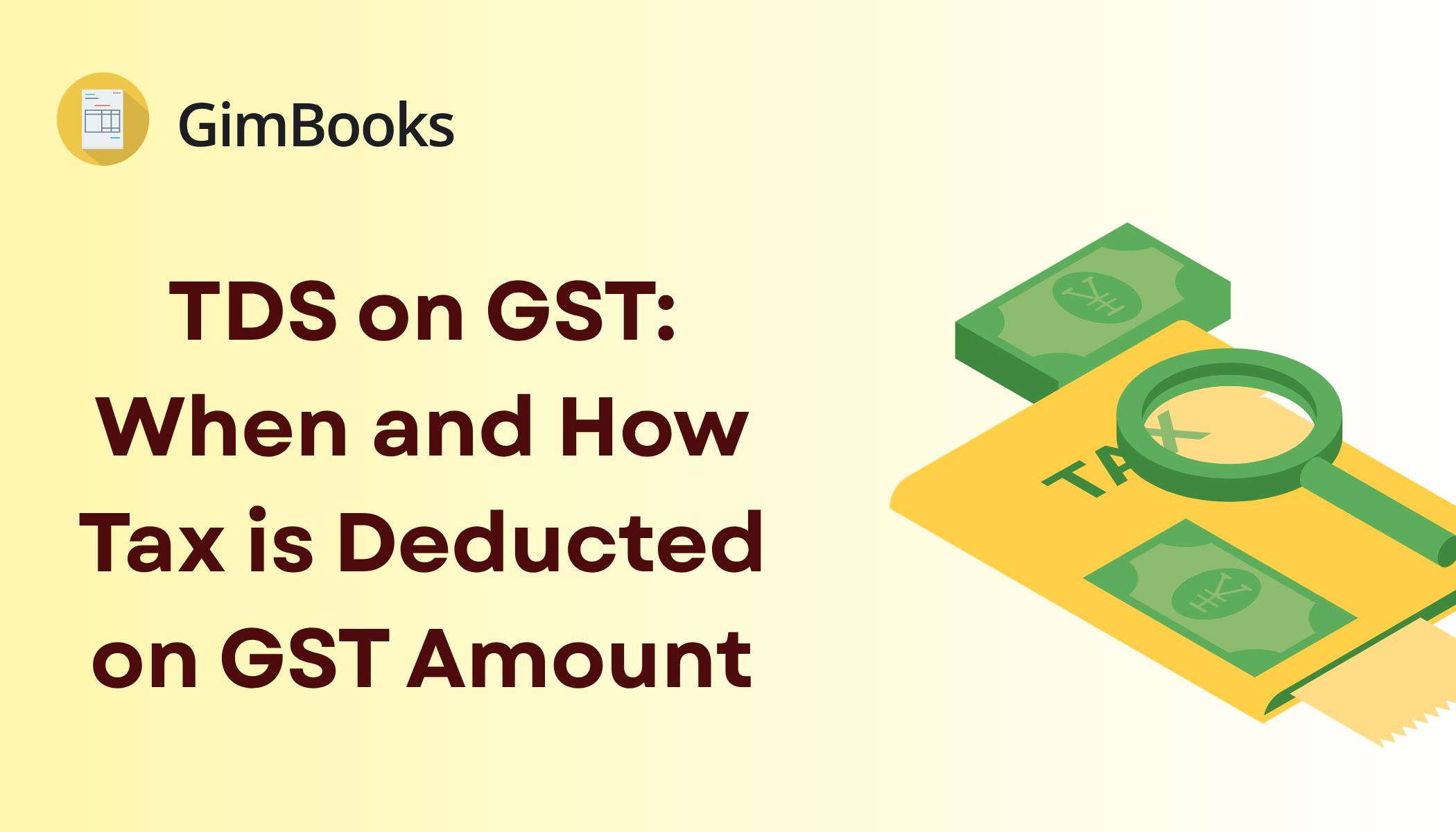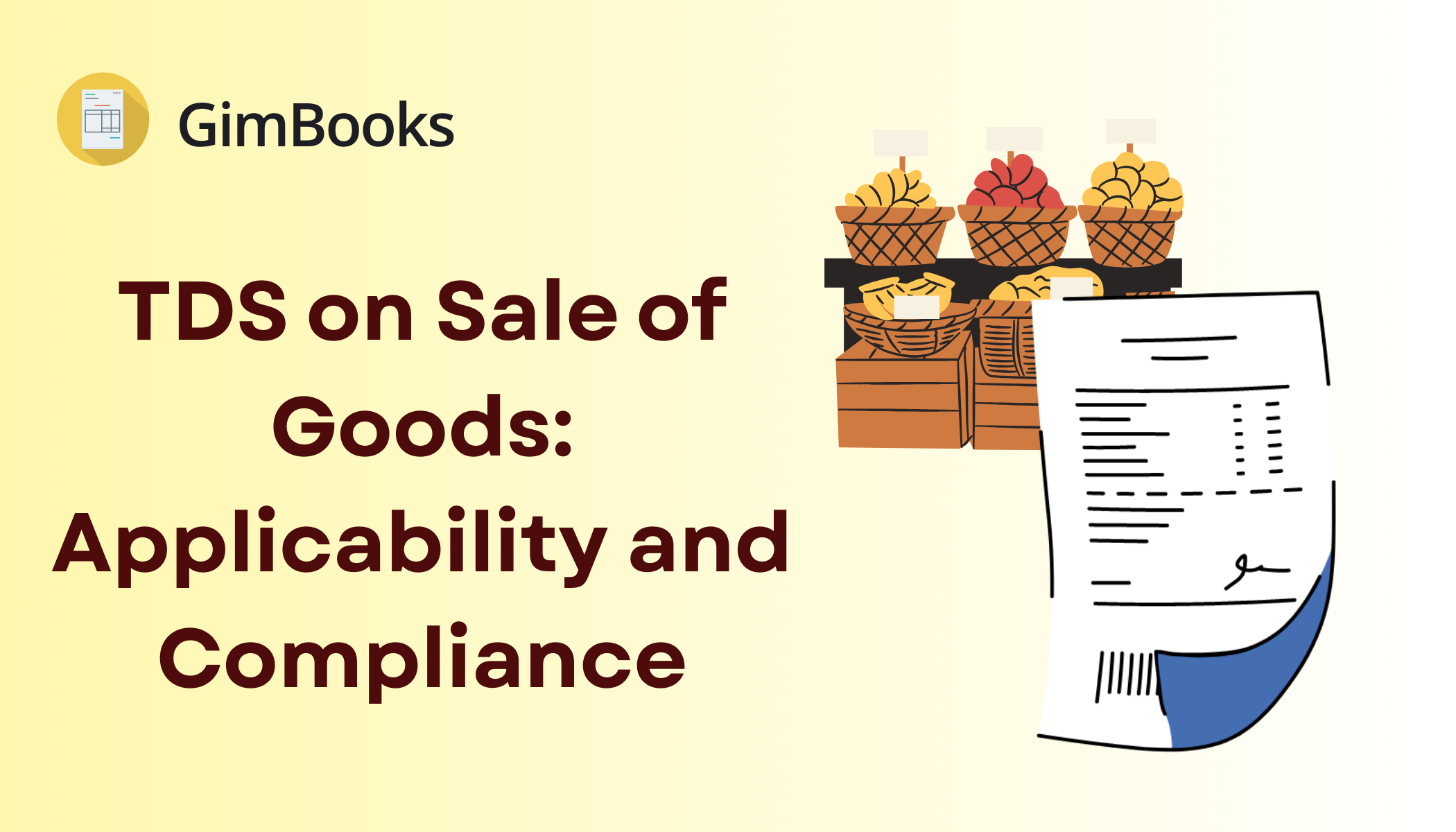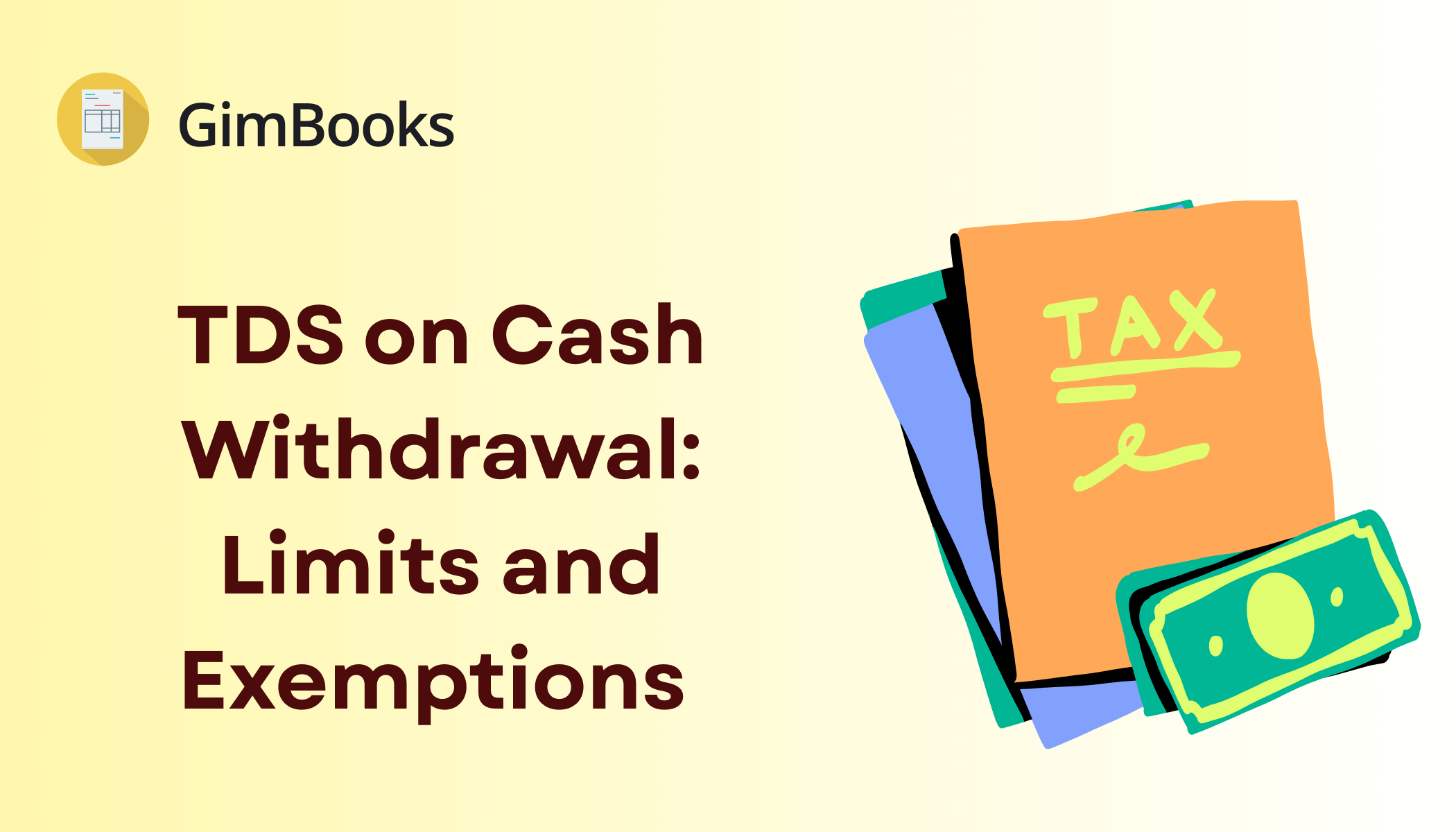TDS on GST: When and How Tax is Deducted on GST Amount

TDS on GST is a key term that small and micro-sized businesses must understand to stay compliant with Indian tax laws. If you are running a small business and are confused about when and how tax is deducted on the GST amount, this guide will simplify the process for you.
When the government introduced GST TDS applicability, it aimed to track transactions better and ensure tax compliance. But many business owners still wonder what GST TDS is exactly, and how it works in day-to-day business.
Let’s break it down step by step in simple language.
What Is TDS on GST?
TDS on GST refers to the process where the person paying for goods or services (the deductor) deducts a small percentage of tax from the payment due to the supplier or service provider. This deducted tax is then deposited with the government.
TDS stands for Tax Deducted at Source. It is a way of collecting tax in advance at the point where a transaction occurs. Unlike normal TDS under the Income Tax Act, TDS under GST applies to the tax portion of a supply of goods or services.
It means, when you make a payment under a contract, a small percentage of the GST amount is deducted and paid to the government by the buyer.
Why Is TDS on GST Important for Small Businesses?
For small and micro-sized businesses, understanding GST TDS rules helps avoid penalties and keeps business operations smooth. It ensures that businesses do not get into trouble during GST audits.
Here are the key reasons why it matters:
- It improves compliance with GST laws.
- It reduces tax evasion.
- It helps track the exact flow of goods and services.
- It ensures the supplier’s GST returns are accurate.
Who Should Deduct GST TDS?
The government has listed specific businesses and government bodies that must deduct TDS on GST. Here’s the list of those under the GST TDS applicability notification:
- Central and State Government departments.
- Local authorities.
- Government agencies.
- Public sector undertakings.
- Authorities established under the law.
These entities must deduct GST TDS applicable on every payment made for the supply of goods and services, except where the contract says otherwise.
If you are a small business supplying services or goods to such entities, your customer might deduct TDS on GST before paying you.
What Is the GST TDS Rate?
The current GST TDS rate is 2% of the total taxable value plus GST. It means if your invoice is for ₹10,00,000 plus GST, the deductor will deduct 2% of ₹10,00,000 as TDS on GST and deposit it with the government.
For example, if your GST rate is 18%, the total bill becomes:
- Taxable value: ₹10,00,000
- GST (18%): ₹1,80,000
- Total bill: ₹11,80,000
Now, TDS on GST would be 2% of ₹10,00,000 = ₹20,000.
So, the deductor will pay you:₹11,80,000 – ₹20,000 = ₹11,60,000.
When Is GST TDS Applicable?
GST TDS applicability comes into play only when you are dealing with specified government bodies and public authorities. Here are key points to remember:
- GST TDS is applicable when the contract value is more than ₹2,50,000 (India).
- TDS is deducted on the taxable value of the supply.
- Services exempt from GST are not subject to GST TDS applicability.
Also, some supplies are on the GST TDS exemption list, like:
- Supplies by an individual or HUF not registered under GST.
- Services received from small-scale units with turnover below the exemption threshold.
How to Deduct TDS on GST Bill: Example
Let’s look at a simple example to understand how to deduct TDS on a GST bill.
Imagine you are providing consultancy services to a government department. The invoice details are:
- Taxable service value: ₹3,00,000
- GST (18%): ₹54,000
- Total invoice: ₹3,54,000
As per GST TDS rules, the deductor will calculate 2% of the taxable service value (₹3,00,000):
- TDS = ₹3,00,000 * 2% = ₹6,000
The deductor will deposit ₹6,000 with the government and pay you:₹3,54,000 – ₹6,000 = ₹3,48,000.
The TDS amount is shown in your GST returns and can be claimed as a credit.
What Is the TDS Exemption Limit?
Under the GST TDS exemption list, small businesses with a turnover below ₹2,50,000 in a contract are not subject to GST TDS.
Additionally, if the supply is of exempt goods or services or made to an unregistered person, TDS on GST does not apply.
It is a relief for small businesses because they don’t have to worry about TDS compliance in such cases.
What Is the GST TDS Return Due Date?
Filing GST TDS returns is important for the deductor. The GST TDS return due date is the 10th of the following month in which the deduction was made.
For example, if TDS is deducted in August, the return should be filed by September 10th.
The TDS deducted must be deposited in Form GSTR-7, which is filed every month.
What Is the Difference Between GST and TDS?
People often get confused between GST and TDS. Here’s a simple way to understand the difference:
So, GST is a tax on supply, while TDS is a method to collect tax in advance.
GST TDS Section: Legal Reference
The legal provision for TDS on GST is under Section 51 of the CGST Act, 2017. It specifies:
- The deductor must deduct TDS while making payment for the supply.
- Deposit the deducted TDS to the government.
- File the GST TDS return every month.
Small businesses need to keep this section in mind and ensure proper compliance.
How GimBooks Can Help
Managing TDS on GST and filing returns can get complicated, especially for small businesses. That’s where GimBooks comes in.
GimBooks is a cloud-based and mobile-first platform designed to make GST compliance simple. It helps small businesses:
- Generate GST-compliant invoices with automatic TDS calculations.
- Keep track of TDS deducted and deposited.
- File GSTR-7 returns easily.
- Stay updated with the latest GST TDS rules and TDS applicability notifications.
With GimBooks, you don’t need to worry about complex calculations or missing due dates. Everything is automated, so you can focus more on running your business.
Visit GimBooks to simplify your bookkeeping and tax management.
Conclusion
Understanding TDS on GST is essential for small and micro-sized businesses. It helps maintain compliance, avoid penalties, and manage cash flow effectively.
Keep in mind:
- GST TDS applicability is limited to specified government bodies.
- The GST TDS rate is 2% of the taxable supply value.
- Filing the GST TDS return due date is by the 10th of the following month.
- Small businesses benefit from the TDS exemption limit.
Use tools like GimBooks to manage your accounting, invoicing, and TDS compliance easily.
Stay informed, stay compliant, and let your business grow with confidence.
To know more, explore the GimBooks informative blog section, specifically written for micro and small businesses!
Related


FAQs
1. What is TDS on GST, and how does it work?
TDS on GST means a small percentage (2%) of the taxable value is deducted by the buyer (usually government bodies) while making payment for goods or services. This amount is deposited with the government and helps track tax compliance.
2. When is TDS on GST applicable?
TDS on GST is applicable when the contract value exceeds ₹2,50,000, and the payment is made to specified government bodies, public sector undertakings, or local authorities as per the GST TDS applicability notification.
3. What is the GST TDS rate for businesses?
The GST TDS rate is fixed at 2% of the taxable supply value under Section 51 of the CGST Act, 2017.
4. How to deduct TDS on a GST bill example?
If the taxable value of a supply is ₹3,00,000 and GST (18%) is ₹54,000, then the total bill is ₹3,54,000. The deductor will deduct 2% of ₹3,00,000, i.e., ₹6,000 as TDS on GST and pay ₹3,48,000 to the supplier.
5. Who is responsible for deducting TDS on GST?
Only specified government departments, local authorities, public sector undertakings, and government agencies are responsible for TDS on GST deduction. Small businesses do not deduct TDS unless they fall under these categories.


